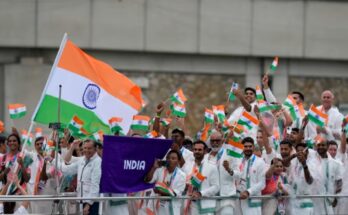Nepal’s new map, cleared by the KP Sharma Oli government on May 20, depicts Lipulekh, Kalapani and Limpiyadhura as part of Nepal.
New Delhi, 14 jun 2020. Nepal’s Parliament on Saturday passed a constitutional amendment to give legal backing to a map depicting disputed areas such as Lipulekh as Nepalese territory, prompting India to say such “artificial enlargement of claims” violates an understanding to resolve boundary issues through talks.
On Saturday afternoon, the House of Representatives or lower house of Nepal’s Parliament unanimously adopted the constitutional amendment bill for including the country’s new political map in the national emblem. This map, cleared by the KP Sharma Oli government on May 20, depicts Lipulekh, Kalapani and Limpiyadhura as part of Nepal.
All 258 members of the 275-strong House of Representatives present in the lower house voted for the bill. The ruling Nepal Communist Party doesn’t have a two-thirds majority in the lower house, and the bill was supported by key opposition parties such as Nepali Congress and Rastriya Prajatantra Party.
The bill is set to be taken up by the National Assembly or upper house next week, people familiar with developments said. The Nepal Communist Party has a two-thirds majority in the upper house and the bill’s passage by the National Assembly is considered a formality.
Reacting to the development, the external affairs ministry – which has said in the past that the matter should be resolved through talks – described the passage of the bill as an “artificial enlargement” of Nepal’s territorial claims.
“We have noted that the House of Representatives of Nepal has passed a constitution amendment bill for changing the map of Nepal to include parts of Indian territory. We have already made our position clear on this matter,” said external affairs ministry spokesperson Anurag Srivastava.
He added, “This artificial enlargement of claims is not based on historical fact or evidence and is not tenable. It is also violative of our current understanding to hold talks on outstanding boundary issues.”
Nepal’s Speaker Agni Sapkota was quoted by The Kathmandu Post as saying: “All 258 lawmakers present in the meeting voted for the bill, while there was no vote against it. I announce that the bill has been endorsed by more than a two-thirds majority.”
When the Nepal government presented the bill in the lower house on Tuesday for discussion, it was unanimously backed by lawmakers from all political parties. After being passed by the upper house, the bill will have to be signed by the president to come into effect.
Nepal’s move to issue the new political map was triggered by India’s inauguration of an 80-km road to Lipulekh on the border with Tibet to facilitate the movement of pilgrims going to the Kailash Mansarovar site. Last year, Nepal had been irked when India depicted Kalapani as part of a new map of the union territory of Ladakh.
Nepalese officials claim they made three proposals to India for talks since last November, with the most recent one in May, but that there was no response from the Indian side. Nepal’s Prime Minister KP Sharma Oli has maintained that Lipulekh, Kalapani and Limpiyadhura are part of his country’s territory on the basis of the Treaty of Sugauli signed with the British in 1816, which says all areas east of the Kali river belong to Nepal.
Oli has also accused India of creating an “artificial” boundary in the region and of encroaching on Nepalese territory by deploying the army.
India has dismissed these claims, saying they are not based on historical facts and records.
Hours before the lower house of Nepal’s Parliament voted on the amendment, Indian Army chief Gen MM Naravane emphasised the strong relations between the two countries. The remarks marked a U-turn from his earlier comments about Nepal working at someone else’s behest to raise the border issue.
“We have a very strong relationship with Nepal. We have geographical, cultural, historical, religious linkages. We have very strong people-to-people connect. Our relation with them has always been strong and will remain strong in the future,” Naravane told reporters.
The India-Nepal border row comes at a time when India is engaged in a tense stand-off with Chinese troops in several sections of the Line of Actual Control (LAC) and Constantino Xavier of Brookings India said it was time for New Delhi to move towards de-escalation with Kathmandu.
“India spent too many years wasting scarce resources on micro-managing Nepal politics. Useless, counter-productive. Delhi can’t be petty. Ignore symbolic amendment. Olis will come and go. Move on, focus on de-escalation, delivery,” Xavier tweeted.




